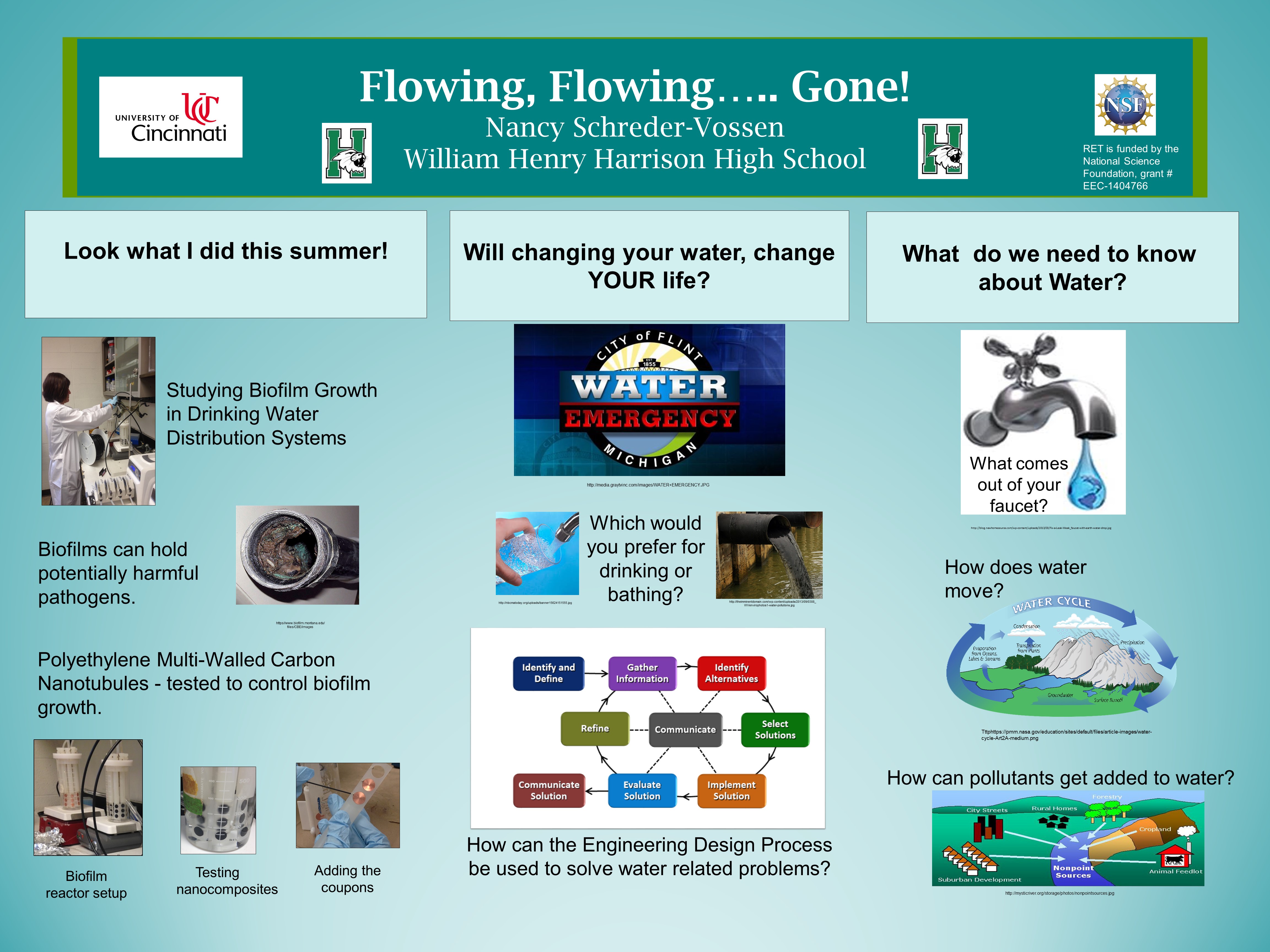Research Experience for Teachers (2016-2017)
Clean Water
 |
||||||
|
||||||
|
Pre/Post Test: Pre-Test Post-Test |
||||||
Keywords:
|
|
The Big Idea (including global relevance) Clean Water |
|
Essential Questions How does water get polluted and what can be done to prevent or reduce pollution? |
|
The Hook
You Tube Video: Water Crisis in Flint MI |
|
The Challenge Design a water filtration system to filter water. |
|
Guiding Questions
|
ACS (Real world applications; career connections; societal impact)
Clean water is an essential resources for all living things. How we live in our watershed, the area that drains into a body of water, can impact water quality and quantity. In order to continue to use water as a resource both the quantity and quality of groundwater musts be maintained. Water running off concrete and asphalt surfaces pick up gasoline, motor oil, heavy metals, trash and other pollutants from roadways and parking lots. Fertilizers and pesticides from farms, lawns, parks, and golf courses are also added to local water sources. These fertilizers are a source of nitrates and phosphorus. High levels of these nutrients can reduce oxygen and increase algae growth while limiting vegetation growth. These factors can disrupt the entire aquatic ecosystem due to limited light penetration, lower oxygen levels, and reduced food supplies in food chains.
Non-point sources of pollution do not enter groundwater at any one particular spot, for example, fertilizers, pesticides and acid precipitation. Point sources of pollution are directly identifiable sources of contamination, such as landfills, leaking chemical storage tanks or spills. These pollutants may then be leached into groundwater or washed into waterways – streams, rivers, lakes and estuaries. These pollutants can result in water systems with reduced water quality and eutrophication.
Career Research Assignment @ My Next Move.org
• Water Resource Specialist
• Water or Wastewater Engineer
• Plant and Systems Operator
• Hydrologist
Misconceptions
- Bottled water is cleaner than tap water.
- Water is free
- Anything that is natural is not pollution
- Pollution is primarily chemical
- Biodegradable materials are not pollution
- Extra precipitation goes into lakes, rivers, and streams (it does not penetrate the ground and become groundwater)
Unit Lessons and Activities
- Lesson 1: The hydrologic cycle (3– 50 minute class periods)
Lesson 1 will focus on providing students with an opportunity to research the water cycle and understand how water moves on the planet. The second activity, porosity and permeability, will demonstrate how different soils impact the movement of water.- Activity 1: Introduction of the Big Idea, Generating the Essential Question, Challenge and Guiding Questions. Parts of the hydrologic cycle will be identified. –> (2-50 minute periods)
- Activity 2: Porosity and Permeability of soils –> (1- 50 minute class period)
- Lesson 2: Water Pollution (5-50 minute class periods)
Lesson 2 enables provides an opportunity to learn about how different types of surfaces impact watershed and how pollutants can be transported into the water supply. One period was spent on a power point regarding sources of pollution, impact on water sources and aquifer formation. The challenge for students will be to design a method to filter water that has been polluted.- Activity 3: Groundwater simulation model –> (2-50 minute class periods/1 class period)
- Activity 4: Design and test a water filtration system, using limited resources, that can filter 16 ounces of water. –> (2 -50 minute class periods)
- Evidence of CBL: Lesson 2, Activity 2
- Evidence of EDP: Lesson 2, Activity 2
Additional Resources
